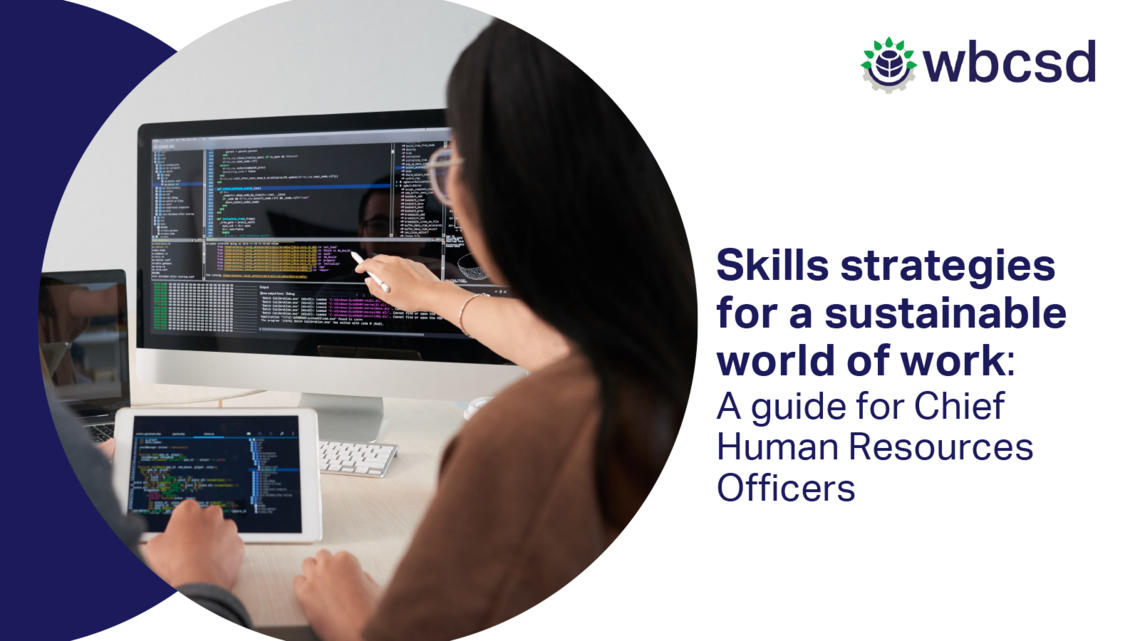Skills strategies for a sustainable world of work: a guide for Chief Human Resources Officers is the result of a collaboration between WBCSD and the Global Apprenticeship Network (GAN Global), a leading organization in the promotion of work-based learning to empower people and businesses, to develop this report.
In 2020, WBCSD’s Future of Work project established a dedicated working group for businesses to share experiences, distil best practices, develop collaborative solutions and address key issues around skills development. Drawing upon these rich discussions, this report aims to inform and inspire CHROs and HR decision makers that are setting out upon the skills development journey. It presents a wide range of effective and appropriate skills strategies and pipelines, leveraging interviews with senior HR professionals and showcasing solutions from 16 leading organizations.
Part 1 provides the big-picture context describing the three main forces driving changes in the world of work: rapid technology evolution, global socio-economic trends and the shifting expectations of workers.
Part 2 presents the skills mismatch as a key challenge for business and society and highlights the risks of not addressing it. After introducing skills development as a key to a sustainable world of work, this part outlines specific actions CHROs can take to kick-start their companies’ skills strategies for the new world of work based on real-life business experiences.
Part 3 explores five crucial steps to develop a forward-looking skills strategy. For each step you will find a description, key questions to consider and short case studies from different organizational realities, bringing these steps to life.
The guide is further complemented by case studies from 16 organizations from across the world, each covering the business need for action, the target audience, key activities and how impact was measured.


